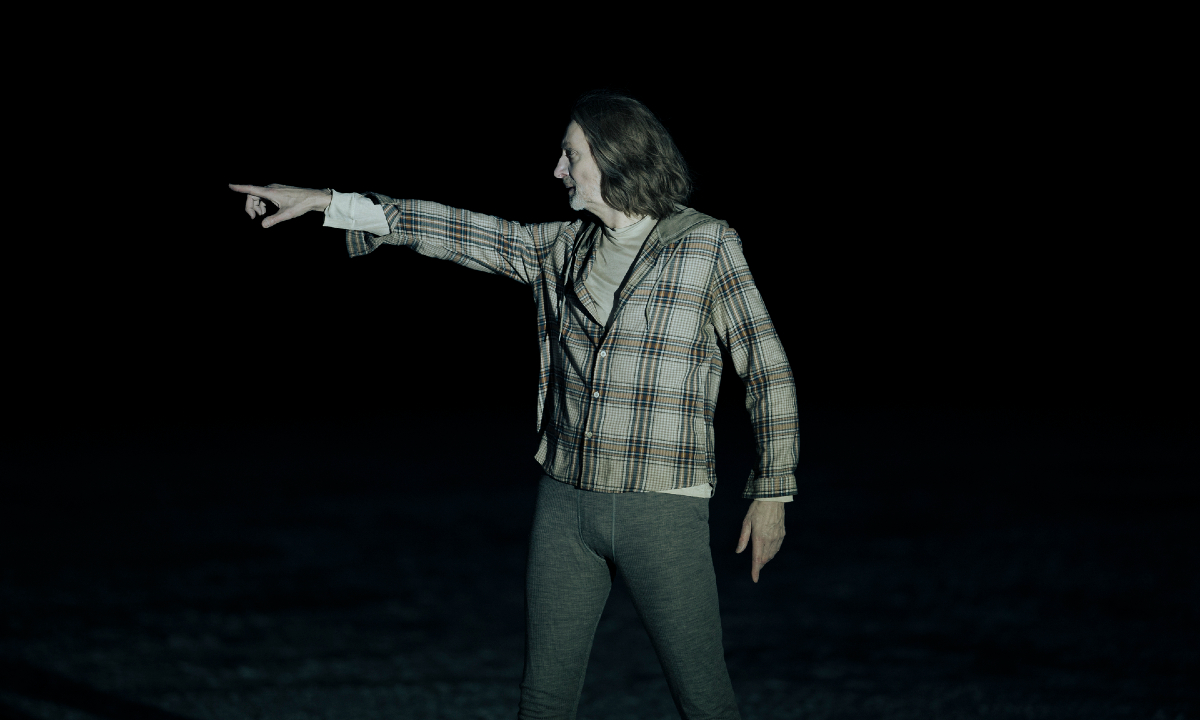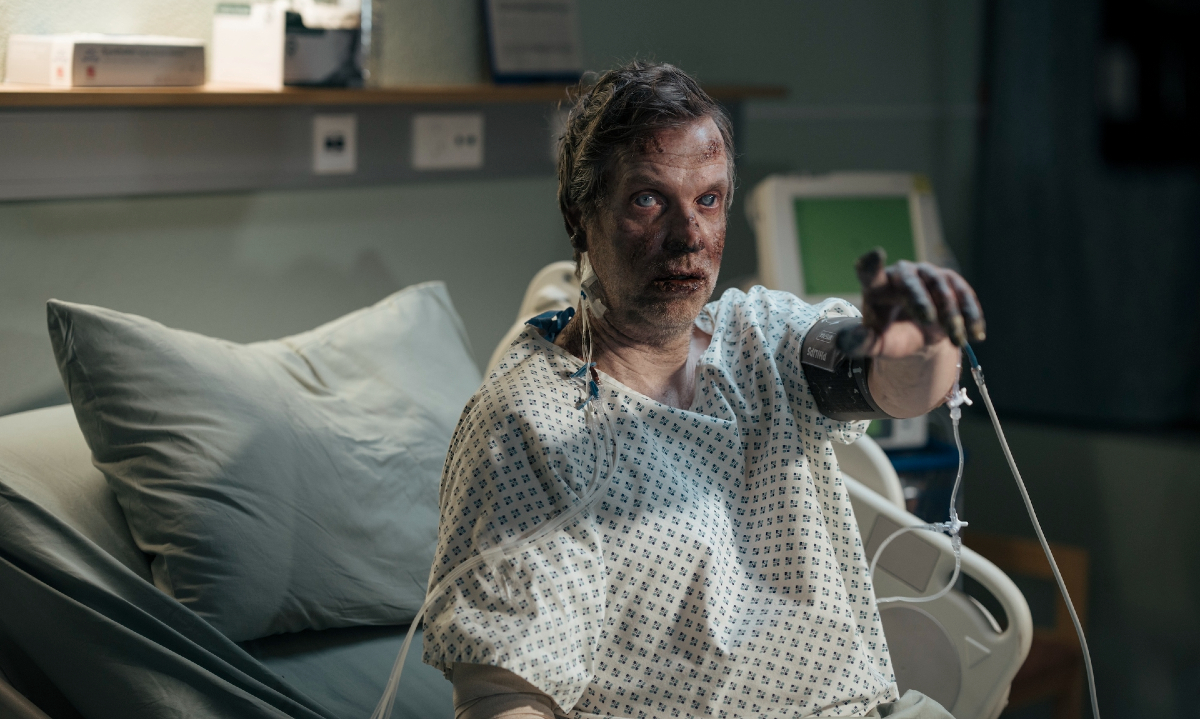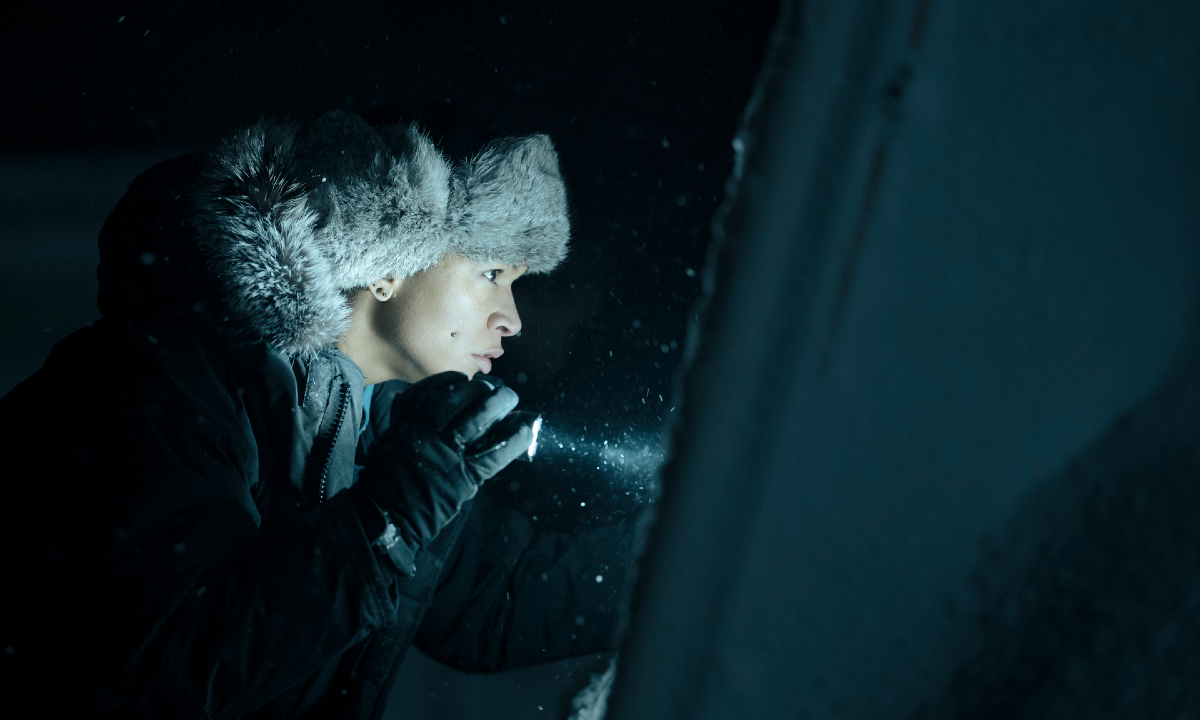Whispers in the dark, a gnarled “corpsicle” of dead bodies frozen in terror, apparitions on the ice, and a gravely injured researcher rising from a coma with a warning from beyond. True Detective: Night Country is embracing the supernatural, but just how much of this season’s mystery is tied to horrors beyond our comprehension?
Although references to cosmic horror—the Yellow King, Carcosa, the spirals—appeared throughout True Detective season 1, Nic Pizzolatto’s story was ultimately about the evils committed by mortal men. Specifically, a cult of child-abusers enabled by a corporation with conspiratorial ties to religious institutions, schools, and the government. Detectives Rust Cohle (Matthew McConaughey) and Marty Hart (Woody Harrelson) spend much of the season engaged in philosophical debates about science and religion; the nihilistic man of science versus the optimistic (and morally compromised) man of faith. In the final episode, the men look up at the night sky and Rust recalls making up stories about the stars with his father in Alaska. Marty asks what the stories were about, and Rust replies, “It’s just one story. The oldest. Light versus dark.”
Night Country begins as the darkness comes to swallow Ennis, Alaska for 30 days of night. In a scene that clearly establishes creator Issa López’s approach to the six-episode series, a herd of elk sense the encroaching darkness—and possibly something primitive lurking within—and jump off a cliff en masse. There is both a natural and a supernatural explanation for the event, but as we’ll soon see, López doesn’t seem to be interested in simple logical binaries. Light or dark, good or evil, natural or supernatural; in Night Country, the answer is often both.

The ghosts of the past
Like Rust Cohle in season 1, Evangeline Navarro (Kali Reis) is experiencing visions that could be otherworldly. But they might just be a symptom of an inherited mental illness. Rose (Fiona Shaw), who has become relatively comfortable with the sight of her dead husband, Travis Cohle (Rust’s father), warns Navarro not to confuse the two. If Night Country has a representative figure, it’s Navarro, who frequently toes the line between binaries, navigating her identities as an Indigenous woman and a cop, the spiritualism of her heritage and the aggressive rationalism of her work, her needs and the needs of others. Even her bisexuality is thematically relevant.
Down the spiral
Though she’s appeared sparingly so far, Rose delivers another key line when Navarro asks about the spiral symbol that connects a past case—the unsolved murder of Annie K., an Indigenous woman and local activist—to the mysterious deaths of eight men from the Tsalal Arctic Research Station. It’s “older than Ennis,” Rose says of the symbol. “Older than the ice itself, probably.” In episode 3, we learn that Annie was plagued by nightmares that only stopped when she got the spiral tattooed on her back. Raymond Clark, a researcher from Tsalal who was secretly romantically involved with Annie, got the same tattoo on his chest after she was killed. The spiral also appears on the forehead of one of the researchers who died.

The thing in the ice
Night Country wears several of its influences on its sleeve, the most prominent of which is John Carpenter’s The Thing. The 1982 horror film is set at a remote research station in Antarctica, where a team of men become increasingly paranoid as a shape-shifting alien entity kills them off and assumes their identities. A DVD copy of The Thing is seen on a shelf at the Tsalal station in the first episode of Night Country, and we learn that the researchers were digging into the ice, looking for ancient organisms—not unlike the researchers in Carpenter’s film.
What happened to the researchers so far remains a mystery, but there is something supernatural going on out there on the ice. Just before the men disappear, one of them hears a voice that whispers “She’s awake.” Upon investigating the gruesome scene, Captain Danvers (Jodie Foster) discovers that one of the men, Anders Lund, is still alive. Suffering from extensive gangrene, the loss of both eyes, and the amputation of multiple limbs, Lund falls into a coma (good for him). When he eventually wakes up at the end of episode 3, Danvers is there to ask what happened at Tsalal. “She woke up,” Lund says. “She’s out there in the ice. She came for us in the dark.”
As Danvers is pulled away to deal with a fight that’s broken out in the hospital waiting room, Lund sits up unnaturally in the hospital bed, points at Navarro, and speaks in an inhuman voice: “Hello, Evangeline. Your mother says hello. She’s waiting for you.”
Earlier in the episode, as Navarro is helping search for Clark—who wasn’t part of the corpsicle and is presumed to be on the run—she tosses an orange and it rolls back to her across the ice. She sees a small child running across the ice into the darkness, carrying a stuffed polar bear. As she chases the child, Navarro slips and hits her head, leading to another vision: the same child whispers, “Get my mommy.” We know that Danvers had a young son who died (the series has yet to reveal how it happened) and who carried around a stuffed polar bear with one eye. In the first episode, Navarro almost crashes her car when she thinks she sees a polar bear in the middle of the road.
The unknown
With Night Country, López says she wanted to “bring back the width of the supernatural” to True Detective. “And I did this by setting it in a place where the veil between this world and other things gets thin,” López explains.
When it comes to solving this season’s mystery, the most logical explanation is more complex and less rational than Danvers would like. Is it something supernatural? Yes. Was a living person or multiple living persons involved? Also yes. Both things can be true, and in this case, they probably are. Our ability to reconcile them, on the other hand, is the hard part.
(featured image: HBO)










Published: Jan 31, 2024 03:22 pm